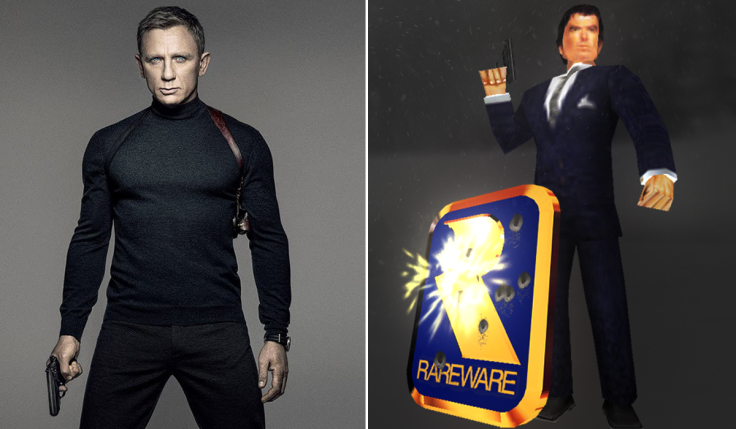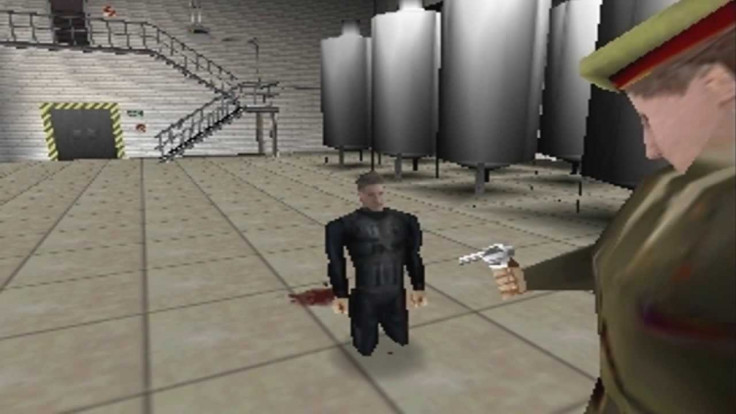What Spectre and whole Bond franchise can learn from N64 classic GoldenEye 007

This week sees the release of the latest Bond film Spectre. Disappointingly I found it a cold and detached film, too concerned with elevating Bond out of "entertainment" and into "cinema". Like its predecessor, Skyfall, it was far too wrapped up in the prestige of the series. Plus, the direction of Sam Mendes speaks of a bored director doing boring work. He can't shoot action, he does everything in close-up and he seems totally uninterested in what makes Bond fun.
There's no life in Spectre, no vim, no brio. Daniel Craig is fed up with Bond and it shows. Christoph Waltz is given nothing to do, and phones in his performance. It's a weird world where Q is the best character in a Bond movie – Ben Whishaw appearing to be the only actor actually into it, and if it weren't for his scenes, the movie would barely crack a smile.
It's unfair to compare movies with games directly, but the Bond series, as it stands, could learn a lot from Rare's GoldenEye 007 for the N64. In terms of structure, narrative, camera and so on, the two are incompatible, but GoldenEye is so full of life, so vibrant and colourful, that it gives a good template, in terms of creative ethic, for Bond as a whole.
They're fortunate to have Martin Campbell's film as inspiration, but the levels in GoldenEye are really alive. You look at the bright greens of Facility, the mixed up objectives of Frigate, the chaos of Archives and you have a Bond outing that's never afraid to just run with ideas.

GoldenEye 64 is never still, never bland, never pretentious – it has an energy and enthusiasm that, since Quantum of Solace and probably before has been absent from the films. One minute you're trawling the surface of the Siberian tundra, shooting at silhouettes through a snow drift. The next you're captured, trying to work your way out of a cell using a magnet on your watch.
The game is liberated from dialogue and character scenes, so the action comes much more naturally and gets the makers' full focus, which is something early Bond movies did as well. Watch the 40 or so minute mountain escape sequence from On Her Majesty's Secret Service, or the traveller's camp shoot-out in From Russia With Love. In those you have a boldness and a vibrancy that's gone from Bond. GoldenEye didn't just emulate the 1995 movie, it was driven by a kind of zeal and gusto that once existed in all the Bond franchise and has since disappeared. Despite differences in form and medium, the game's exuberance can be recreated on film. It's been done before.
GoldenEye has a wonderful lack of ostentation. Its multi-player option was a last-minute addition, the game was almost cancelled a bunch of times, the levels were created ad-hoc, with dozens of rooms and assets leftover in the final cartridge. You get the sense Rare was having lots of fun with GoldenEye, trying things, throwing them in, cranking it to 10 and seeing what happened. It's never timid. That wet meat smack sound you get when you shoot a guard is perfectly emblematic of GoldenEye's willingness to be nasty, grubby and boisterous.
Compare that to Spectre, where Daniel Craig and Dave Bautista idly drive the streets of Rome in two boring supercars. The film's opening Day of the Dead sequence is a highlight, but even the pre-titles punch up is shot in diminishing close-up – you don't get to see the guys fall after they're kicked out of the helicopter by Bond. It's just scared and minor. GoldenEye 64 by contrast is full of fun, from the weird DK mode to the peppy elevator music and the campy Aztec level. It's occasionally slapdash but never lazy. Like Bond himself, it enjoys itself, recklessly.
And that's what the Bond films need to do. They need perspective, vigour and a director who isn't digging for awards. It's not high art. It's not psychology. It's not, or at least it shouldn't look meticulous. It's James Bond.
For all the latest video game news follow us on Twitter @IBTGamesUK.
© Copyright IBTimes 2024. All rights reserved.







